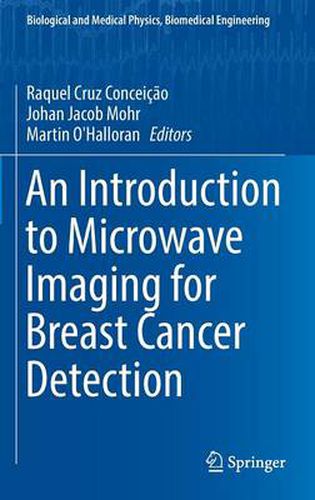Readings Newsletter
Become a Readings Member to make your shopping experience even easier.
Sign in or sign up for free!
You’re not far away from qualifying for FREE standard shipping within Australia
You’ve qualified for FREE standard shipping within Australia
The cart is loading…






This title is printed to order. This book may have been self-published. If so, we cannot guarantee the quality of the content. In the main most books will have gone through the editing process however some may not. We therefore suggest that you be aware of this before ordering this book. If in doubt check either the author or publisher’s details as we are unable to accept any returns unless they are faulty. Please contact us if you have any questions.
This book collates past and current research on one of the most promising emerging modalities for breast cancer detection. Readers will discover how, as a standalone technology or in conjunction with another modality, microwave imaging has the potential to provide reliable, safe and comfortable breast exams at low cost. Current breast imaging modalities include X- ray, Ultrasound, Magnetic Resonance Imaging, and Positron Emission Tomography. Each of these methods suffers from limitations, including poor sensitivity or specificity, high cost, patient discomfort, and exposure to potentially harmful ionising radiation. Microwave breast imaging is based on a contrast in the dielectric properties of breast tissue that exists at microwave frequencies.
The book begins by considering the anatomy and dielectric properties of the breast, contrasting historical and recent studies. Next, radar-based breast imaging algorithms are discussed, encompassing both early-stage artefact removal, and data independent and adaptive beamforming algorithms. In a similar fashion, microwave tomographic reconstruction algorithms are reviewed in the following chapter, introducing the reader to both the fundamental and more advanced algorithms. Apart from imaging, the book also reviews research efforts in extracting clinically useful information from the Radar Target Signature of breast tumours, which is used to classify tumours as either benign or malignant. Finally, the book concludes by describing the current state of the art in terms of prototype microwave breast imaging systems, with a particular emphasis on those which have progressed to the clinical evaluation stage.
This work is motivated by the fact that breast cancer is one of the leading causes of death amongst women in Europe and the US, and the second most common cancer in the world today. Such an important area of research will appeal to many scholars and practitioners.p>
$9.00 standard shipping within Australia
FREE standard shipping within Australia for orders over $100.00
Express & International shipping calculated at checkout
This title is printed to order. This book may have been self-published. If so, we cannot guarantee the quality of the content. In the main most books will have gone through the editing process however some may not. We therefore suggest that you be aware of this before ordering this book. If in doubt check either the author or publisher’s details as we are unable to accept any returns unless they are faulty. Please contact us if you have any questions.
This book collates past and current research on one of the most promising emerging modalities for breast cancer detection. Readers will discover how, as a standalone technology or in conjunction with another modality, microwave imaging has the potential to provide reliable, safe and comfortable breast exams at low cost. Current breast imaging modalities include X- ray, Ultrasound, Magnetic Resonance Imaging, and Positron Emission Tomography. Each of these methods suffers from limitations, including poor sensitivity or specificity, high cost, patient discomfort, and exposure to potentially harmful ionising radiation. Microwave breast imaging is based on a contrast in the dielectric properties of breast tissue that exists at microwave frequencies.
The book begins by considering the anatomy and dielectric properties of the breast, contrasting historical and recent studies. Next, radar-based breast imaging algorithms are discussed, encompassing both early-stage artefact removal, and data independent and adaptive beamforming algorithms. In a similar fashion, microwave tomographic reconstruction algorithms are reviewed in the following chapter, introducing the reader to both the fundamental and more advanced algorithms. Apart from imaging, the book also reviews research efforts in extracting clinically useful information from the Radar Target Signature of breast tumours, which is used to classify tumours as either benign or malignant. Finally, the book concludes by describing the current state of the art in terms of prototype microwave breast imaging systems, with a particular emphasis on those which have progressed to the clinical evaluation stage.
This work is motivated by the fact that breast cancer is one of the leading causes of death amongst women in Europe and the US, and the second most common cancer in the world today. Such an important area of research will appeal to many scholars and practitioners.p>